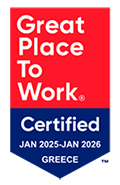7 smart ways to protect your Lone Workers
Lone Workers - General Information
What about Lone Workers and Lone Working protection?

According to U.S. Bureau of Labor Statistics, almost 3 million accidents occurred in workplace in 2012.
To add more, data regarding work accidents in workplace are discouraging, as an average of 31 people in United Kingdom experience workplace accidents every day.
No matter what statistics indicate about workplace incidents, it is a common sense that Workers safety should be the most significant concern for all companies and organizations. To make it simple, why should a worker be efficient and focused on his work if he feels unsafe and vulnerable to risks?
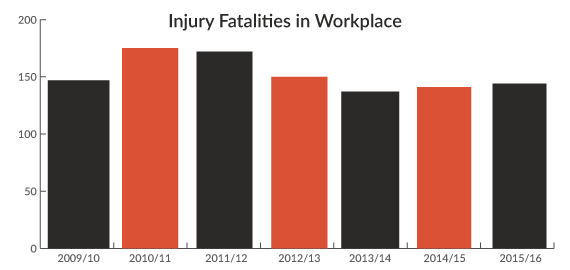
Lone Workers Protection
You should always care for your Lone Workers protection level

Nowadays, the technology evolution has increased the number of people who work alone either in outdoor or indoor conditions. It makes more necessary than ever to build a robust framework to ensure maximum protection for all staff and especially for Lone Workers, as they are expected to work under heavy conditions and in most cases in remote areas.
The term Lone Worker is surely familiar in case you have worked under risky conditions or far away from being supervised by others. In any case, you should maybe care less in case you are not a Lone Worker but you should focus especially on a Lone Worker Protection Policy in case you run a business and employ workers or be the manager of several Lone Workers.
In this article, we will try to suggest solutions and focus on the proactive measures a company should take in order to provide a safe and healthy environment for its Lone Workers.
Who is a Lone Worker?
Let's segment Lone Workers into categories

Initially, let’s see who is considered to be a Lone Worker.
A lone worker is an employee who is operating out of sight or sound of other employees.
So, we can immediately realize the real risk.
In case the Lone Worker is not seen by other workers or a supervisor, nobody will perceive that he deals with an emergency in case there is one. At the same moment, if nobody is close to him, it will be completely impossible to help the Lone Worker in case of an urgent state. In other words, a Lone Worker is absolutely what the definition indicates: A totally alone worker.
Commonly, when we talk about Lone Workers, we think about field service workers, construction workers and in general people who work distantly from other employees of the company.

However, we should not conflict Lone Workers and distant workers. In most cases, Lone Working means something more than we guess about. We have to realize that Lone Workers are today a significant part of any company’s staff and all companies and organizations should bear in mind to provide the best strategies so as to ensure Lone Workers’ safety and prevention.
Even if there are companies which don’t occupy Lone Workers, there is a high possibility that some employees are occasional Lone Workers - just for a couple of days. A common example is the workers who participate in financial audits and should travel abroad, working far from their office.
Most Companies today have Lone Working staff
Lone Workers types
What are some basic types of Lone Workers?

Let’s see some examples of Lone Workers.
As we have already mentioned, you should stop consider that Lone Workers are always distant workers. A Lone worker could be an employee who works late at night alone in his office or a salesman who is getting around and delivers brochures and promotional fliers. Moreover, a Lone Worker could be a real estate agent who is travelling throughout the country to demonstrate properties for a potential buyer.
The bottom line is this:
The tremendous technological growth and the remote working conditions have increased the number of people who are working alone today.
Most companies today employ Lone Workers. We can mention the following types of Lone Workers but not limit to them:
- Agricultural and forestry laborers
- Delivery drivers
- Social workers and family services
- Education Workers
- Fuel station attendants
- Parole Officers
- Home Healthcare nurses
- Hospitality Workers
- Emergency Workers
- Technicians
- Health Visitors
- Transportation Workers
- Salesmen
- In-home help providers
- Security personnel
- Real estate agents
- Traffic Workers
- Utilities Workers
Why should you concern about Lone Workers?
They are a vital part of your company

So, let’s take the next step.
Why should a company apply a different safety policy for Lone Workers and not include it to the general policy regarding all workers safety?
It’s a no-brainer:
Normally, Lone Workers are under higher risk than any other employee of the organization. The most important risks are closely related to heavy industrial jobs and construction workers as there is a higher possibility to get involved in an accident, like falling, collapsing etc.
But are these the only risks a Lone Worker has to come up with? Of course not.

Let us explain.
A salesman is planning to visit five different clients in five different locations. Who could guarantee about the healthy social behavior of these people and that they will not set a risk to the physical or mental health of the salesman?
So, the salesman is a Lone Worker and it is obvious that this kind of work includes a risk for him.
Now, it is needless to say that not only construction workers and field service workers are dealing with potential risks in their workplace. In case an employee has to interact with other people, communicate with them or meet them to their place, the company should hold a concern about his safety and the way he will be protected against potential threats.
Many companies are directed from a strong moral which indicates that the respect to human life is by no means their most important principle. In addittion, companies that have experienced work accidents in the past have usually evaluated that the cost of an accident is huge, compared to the cost of enacting a specific Lone Working Policy for their employees. They also consider that in the first case, a major cost of business disruption and reputational brand damage has to be taken into account.
So, lets’ get to the point: check the 7 proven ways to come up with Lone Worker Risks and offer maximum protection to your Lone Workers.
1. IDENTIFY POTENTIAL RISKS AND HAZARDS
The first rule to ensure better Lone Worker protection is to identify all involving risks and problems that may arise. We can distinct two major categories of Lone Worker Risks:
Environmental Risks
Environmental risks include slips, trips, falls, blunt force trauma or other threats which can be considered as a man down situation. We can also include in this category all health diseases, such as heart attacks, strokes, bumps or any other disease which needs immediate health care action. Despite the fact that all Workers who work in external conditions are susceptible to environmental risks, Lone Workers have to deal with increased danger due to the unknown response time after an occurring incident. That’s because Lone Workers are totally alone and nobody will see them immediately when an urgency takes place.
Social Risks
Social Risks is the most common risk that employees have to deal with in case they are interacting with many people every day. In this category, we could mention cases such as robbery, physical assault, sexual assault or mental assault.
We could also add some “undefined” incidents. Think about it this way:
Depending on the working field of each employee, there are many risks they are exposed but cannot foresee. For example, that’s when a food deliverer is attacked by animals, teachers are verbally offended by students’ parents or healthcare workers face unfriendly house guests. The same is for taxi drivers or truck drivers who interfere with many different people every day.
Do you see where we are going with this?
Just answer:
Can you trust all the people you are interacting with? Of course not.
We should consider that risks and hazards are not always visible. So, just look further and try to predict all kind of hazards a Lone Worker may face during his worktime, especially if his work includes daily communication with many different and unfamiliar faces.

2. CONDUCT A LONE WORKER RISK ASSESSMENT
There are many ways a company can limit the consequences of violence in workplace. Employers should always have a proactive approach, evaluating the real danger and getting it under control.
In order to face efficiently Lone Worker hazards, we should firstly make a list of all the potential risks a Lone Worker is exhibited to. So, let’s make the following questions:
- Is there safe access to the working place through vehicle?
- Is there a risk of violence or aggression?
- Will the work involve the use of hazardous substances?
- Will the work involve any manual handling operations?
- Are women especially at risk if they are working alone?
- Does the work involve access / contact with animals?
- Will the work involve radiation sources or lasers?
- Will the work involve naked flames, heat, smoke or fire?
- Will the work involve gas, electricity or water?
- Will the work involve access to dangerous moving parts?
- Will the work involve hand tools, sharps, needles or glass?
- Will the work will be executed from height?

Answering the above question, the company can be fully aware of the potential risks and hazards for Lone Workers. So, Lone Workers managers can now get measures in place so as to turn away some of these risks and increase protection for Lone Workers. Moreover, it is also important to periodically re-evaluate the risks so as new Lone Workers will be aware through the past experience about the difficulties they will face and be prepared to throw away risks and problems.
When conducting a Lone Working risk assessment, you should also be aware of some necessary facts:
- It is inevitable to operate some tasks just from one Lone Worker, as you increase the risk. It means that you simply have to avoid Lone Working conditions in these tasks.
- When one of your Lone Workers is working in the office or workplace of another company, be aware of the new workplace risks and the Lone Worker Policy the other company is executing.
In any case, it is one of the most significant processes to evaluate all the risks and hazards so as to avoid problems and emergency incidents for your Lone Workers.
3. TRAIN LONE WORKERS AND SUPERVISORS
Training is a vital part of any company, business and organization so as to thrive and evolve. Training boosts workers’ confidence as they feel ready to handle problems and get things done. Furthermore, training is a process of shared responsibility between the employer and the workers. The employer shows an intense will to help his workers deal with problems in a better way and to invest on the most important asset of his company: the people who work for it.
Training is indispensable. Here are some core components of an essential training course for Lone Workers:
- Inform about workplace hazards
- Teach work behavior and best practices to avoid getting in dangerous conditions
- Train workers about the use of machinery and all necessary equipment
- Train workers for jobs that need special knowledge and handling, such as electricity workers, technicians etc.
- Check worker’s physical and mental health so as to ensure that all of your Lone Workers are capable of working under lone working conditions
- First aid training
- Train Lone Workers to use properly the lone working monitoring system company has adopted. (see below)
- Inform about access restriction to specific places
- Inform about all the security and safety standards and rules
- Train them regarding personal protective equipment
- Keep an Incidents book (in case you have not moved to an online Lone Working Solution) at the workplace. In many countries, you are obliged to do it according to the Law.
- Driving training for all company’s vehicles (e.g trucks etc.)
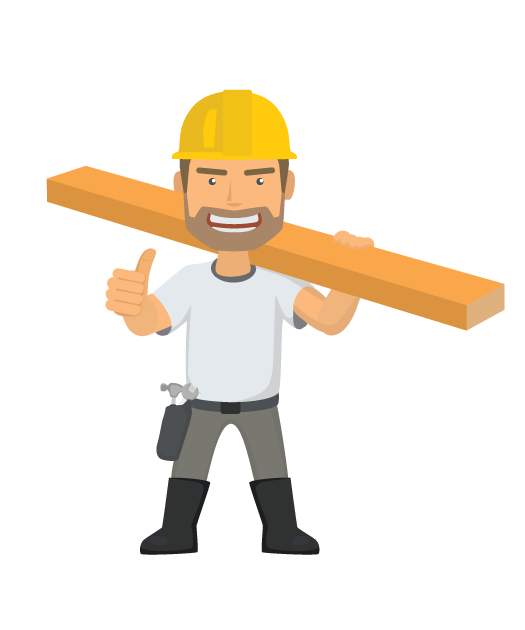
4. APPLY A LONE WORKING POLICY
Looking from a company’s side, there is one major issue to deal with every day: security. Security has a double meaning:

Security of Workers

Security of Assets
Of course, the primary is obvious and there is no need to further analyze. What is more valuable than a human life? A core concern for any company who employs people is that they are safe to offer their services without interfering with risks or feeling anxious. The employer and the department managers of each company have to ensure the best possible circumstances for the safety of the employees.
That’s the reason why companies who have many Lone Workers need to design a clear and robust Lone Worker Policy. In most cases, the legislation sets an obligation for a lone working policy especially for workers who do not get an immediate support from their colleagues or others when facing hazards and threats.
Technology can play an important role towards this direction, but you should also make more effort, including the following:
1 Good risks assessment processes for managers and staff
2 Robust procedures that put in place measures to address identified and potential risks and deal with occurring incidents
3 Managers that share their responsibility and support the need to provide best security service
4 The sharing of information within the company and a well-documented accountable system
5 The provision of high quality training, as we mentioned above, either it means to take proactive measures or prevent the incidents.
Keep in mind that you have to refresh the documents which are related to the lone working policy:
- The Lone Worker policy will always include all the workplaces where the staff is located and works.
- Lone Workers change, so the new Lone Workers shall be aware of the problems and the potential hazards.
- As we learn more about the problems arise and the causes that lead to these problems.
- As risks change during time.
- As staff changes during time.
- As technology changes or evolves.
It is crucial for any company to provide a safe working environment to Lone Workers so that they operate their tasks without physical or mental distraction. Work dedication means higher productivity and higher income for a company. It is true that one of the major concerns of low productivity and low sales rate is a bad work ethic. As you suppose, the fear of high risks in workplace is a major cause that leads to a low work ethic.
Of course, there are many kind of jobs which include a risk that nobody can avoid. For example, a technician who has to fix a malfunction and is working from a height, will always be at a higher risk than a Lone Worker who is typing at his office late at night. Also, a driver in a car rental company (e.g. one who works in Santorini ATV rental company or Santorini Scooter rental company in Greece!) has to accomplish many tours everyday maybe alone and in higher danger due to car accident probability.
The vital part to succeed high productivity under certain risky conditions is to ensure that the company has taken care of the hazards and risks and has supplied its Lone Workers with all the necessary means to avoid emergencies or react immediately in case of one.
Why use a Lone Worker Policy
It directs safety issues and contributes to the provision of a safer work environment for staff that works alone or out of sight.
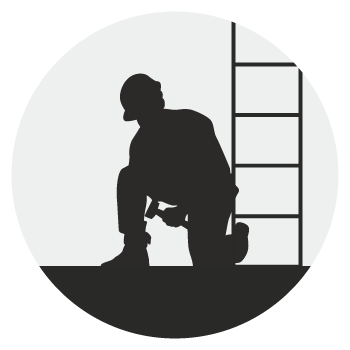
It builds a framework for the evaluation of risks which staff may interfere with and provides instructions for risk reduction

It is comprehensive and is applied for any situation or incident that may take place in a work environment
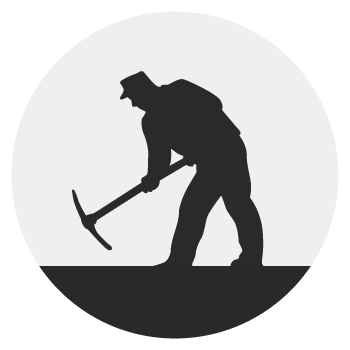
In any case, you have to get consulted from your employees. They know better from everyone about the risks they face in their work and can address you to define your Lone Worker policy that will consist of all the potential risks and threats and will arm them with the best means so as to avoid dangers.
5. ENCOURAGE COOPERATION BETWEEN LONE WORKERS AND MANAGING STAFF
The managing staff of a Lone Workers company should be always aware of the activities, the locations and the schedules of Lone Workers. In case the company has adopted a Lone Worker Monitoring system (as you can see in chapter 6), it is an easy procedure. Lone Workers and Managers can communicate directly through the application and automate all relevant processes. However, in case the company has not yet implemented a Lone Worker system, a constant communication channel has to be activated between Lone Workers and Department managers. To assist the daily communication between the two parties, Lone Workers could provide all relevant information to Department managers, like:
- Full addresses of their location and where their tasks are going to be carried out
- Details of any people they are going to visit
- Their telephone numbers and other ways of communication
- The exact time they picked off from office and the time they should be expected to return
- How much they are going to stay to each location (a prediction of time)
- If their mobile phones are fully charged or have run out of battery
- Details about the vehicles and the staff that will use these vehicles. These should consist of the car’s license number, the type and the color of the vehicle etc
- Everyone has to know that everything is working in perfect, like machinery, etc
- The staff should be trained and not unaware of all the systems inside the company
- Emergency contacts should be in speed dial mode
- Mobile phones should not be far away from the location of the Lone Worker so as to be immediately accessible
- Mobile phones should not be used during driving
RESPONSIBILITIES OF DEPARTMENT MANAGERS
- Ensure the application of Lone Worker Policy and ensure that all the security systems applied work properly
- Monitor and review the effectiveness of applied Lone Worker Policy and consult Senior Managers about any weakness in the Lone Worker Policy
- Mention all the relevant incidents to the Human Resources department
- Ensure that Lone Worker Policy is not just a paper nobody pays attention to: Instead, it is a crucial document for all company’s safety procedures and working tasks.
- Be the first to learn about the problems Lone Workers face.
- Conduct reports about accidents or incidents which relate to Lone Worker tasks and are about assaults towards the staff.
RESPONSIBILITIES OF LONE WORKERS
- Lone Workers should know about the risks in real time and also evaluate the potential risks may arise
- Adhere to the Lone Worker policy
- Avoid high risk situations and if necessary to involve in such situations, get strict proactive measures
- Notify managers and supervisors about the risks they recognize
- Share all crucial information with Department Managers
- Use properly and consistently the Lone Worker Monitoring system of the company
6. INVEST IN A LONE WORKER MONITORING SYSTEM
We have already mentioned that it is very important to take proactive measures so as to be prepared for the future risks which Lone Workers are going to come up with.
What does this stands for?
Today, technology has affected all aspects of life and businesses. People work more efficiently and use more advanced tools in order to accelerate processes and get fully automated solutions.
So, it maybe sounds familiar to you the term “lone worker system” or “lone worker monitoring system”.
What exaclty is it?
"A Lone Worker System is a computer program or a combination of applications (iOs, Android apps or web applications) which help businesses monitor and manage Lone Workers, being aware of their position in real-time and getting SOS and Man Down Alerts."
Which are the benefits of a Lone Worker solution for you company?
- Better task management
- Scheduling
- GPS Tracking
- Automation
- History Recording
- Better time management
- Faster interaction and communication
- Timekeeping
- Reporting
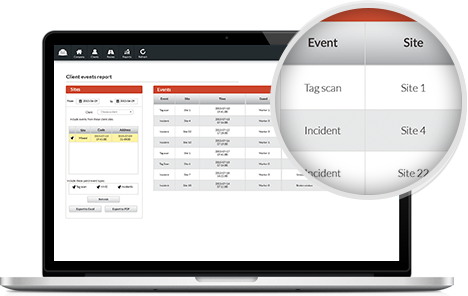
MyLoneWorkers solution is specially designed for Lone Workers security and protection, offering maximum protection just through a smartphone application. In case of a SOS situation or a man down alert, the application sends automatic alerts to the managing staff and notifies about the emergency. In case the Lone Worker cannot communicate, the managing staff will directly notify the nearest workers to get to the location and check the situation.
It is important to understand that through a Lone Worker monitoring system, the Lone Workers can reach the Managing Department in real-time, a case that would be inevitable without a Lone Working monitoring solution.
MyLoneWorkers sets Lone Working under a safety framework, offering a leading solution in the global market. Workers can simply, just using their smartphone feel that there is a safety plan designed especially for them, meaning that the company shows extensive interest for their safety and secondly for the way they operate. MyLoneWorkers focuses to help businesses protect their Lone Workers from social and environmental risks, as defined above and the company can handle incidents in a faster and more secure way.
In our next article, we will analyze the 10 necessary components a Lone Worker monitoring system should have so as to offer the best management and security to Lone Workers and companies who employ them.
MyLoneWorkers is a Lone Worker system which relies on the use of 3 types of checkpoints (3play technology). It simply means that the company can choose between 3 different types of checkpoints to attach in workplace locations. Checkpoints are then scanned by Lone Workers so as to indicate their presence to each specific workplace and send real-time incidents to the Department Managers who manage through a web application (https://app.myloneworkers.com)
3play technology system

QR-Codes
The Lone worker scans QR-code checkpoints by placing his smartphone near the QR-code label
Beacons
The Lone Worker scans the Beacon checkpoints distantly, just being within the Beacons' range!

NFC tags
The Lone Worker scans the NFC checkpoint by simply passing his smartphone over the NFC tag.
7. PROVIDE THE BEST EQUIPMENT TO LONE WORKERS
It may be true that «A bad workman always blames his tools».
But what if these tools are not in place or are not well maintained?
Then, you cannot blame your workers for inability to accomplish their tasks.
Employers are responsible to develop all the necessary procedures to ensure that Lone Workers will have all the necessary equipment to execute properly their daily tasks. Being well equipped means that that the Lone Worker will not only execute his tasks, but he will also feel more safe and protected from external risks.
For example, just think about an electricity technician who works in remote locations and his electrical equipment is not well maintained or not serviced at all. The Worker is under an emergent risk.
Also, just think about security guards who don’t bear all the necessary security guard equipment like belts, uniforms, etc. It means that they are daily exposed to risks and the company cannot in any case guarantee about their safety.
We have to make a special reference in case Lone Workers need vehicles to operate. Not to mention more, the managing staff of the company which employs Lone Workers should answer the following questions:
- How will Lone Workers get to their location and how safe is the vehicle that will carry them there?
- Will the Lone Worker drive by himself in order to reach to the location? If yes, is he properly trained to drive company’s’ vehicles?
- How far away from the vehicle will the Lone Worker be during executing his tasks? Will he have immediate access to it?
In case the job of the Lone Worker depends directly from his vehicle, then the employers have to pay special attention to it.
Just think firemen. Their job is depending from their vehicle. If the vehicle is not in excellent condition and fully serviced, it is possible that not only they will not carry out their duties, but they will be vulnerable to major threats regarding their life. Nobody should ignore it and employers should do their best in order to ensure protection for this kind of Lone Workers.

MYLONEWORKERS MONITORING AND MANAGEMENT SYSTEM
The simplest way to monitor your Lone Workers in real-time through advanced Internet of Things technology
About Us!
ABOUT US
Terracom has as main objective the production of innovative technology products and the provision of integrated IT and communications solutions.
The No1 Workforce & Safety Management Systems Vendor
MYLONEWORKERS SHOP

From the blog
February 12, 2025
February 06, 2025
January 29, 2025
Get in touch
CONTACT US
Terracom S.A
Thesi Ntousia,
Bafra, Ioannina
ZIP: 45500, Greece
+30-26510-94333
info(at)myloneworkers(dot)com
